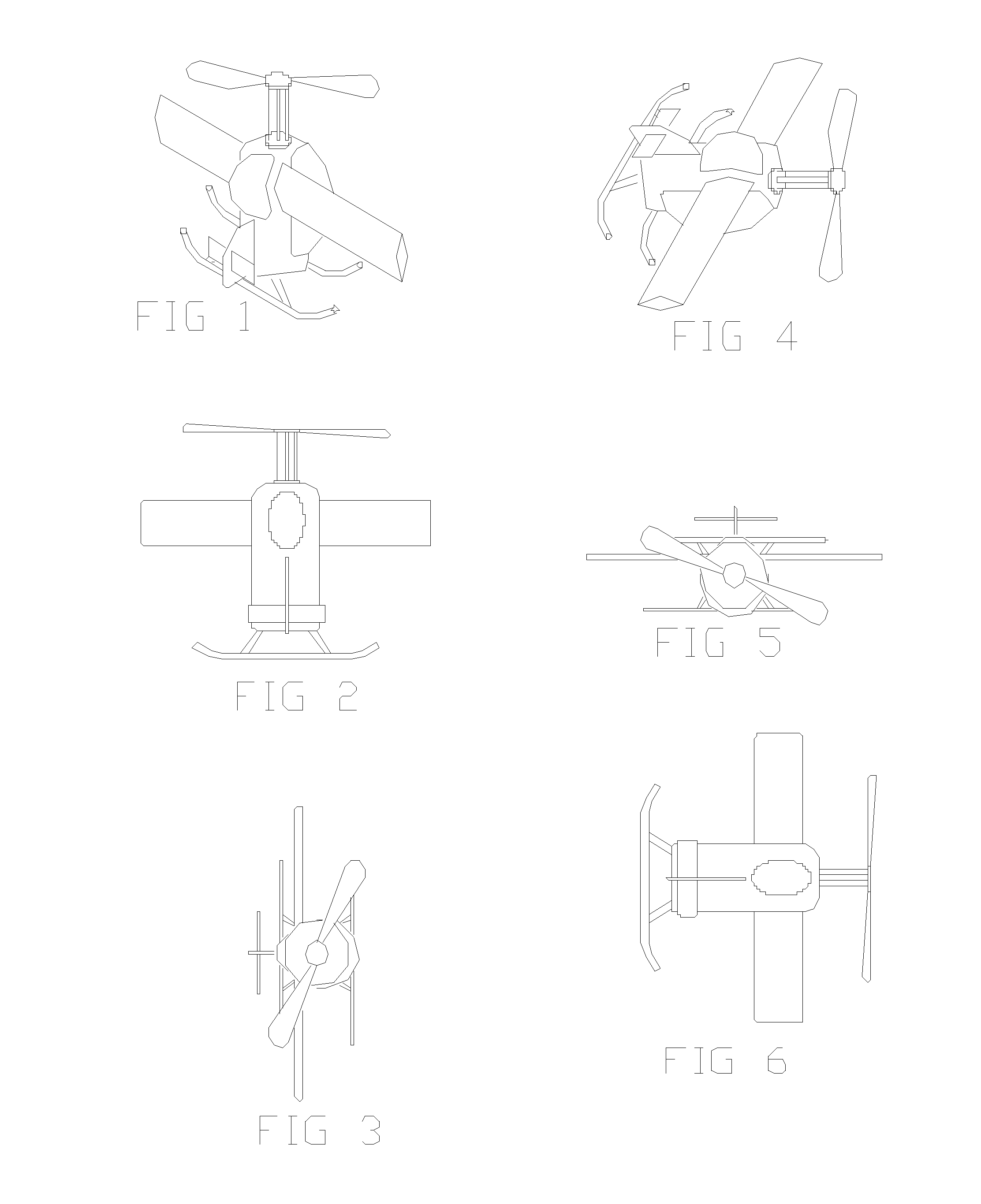High-speed vtol aircraft
a high-speed, vtol technology, applied in the direction of aircraft navigation control, vertical landing/take-off aircraft, transportation and packaging, etc., can solve the problems of increasing complexity, increasing weight, and limited forward flight speed of conventional helicopters
- Summary
- Abstract
- Description
- Claims
- Application Information
AI Technical Summary
Benefits of technology
Problems solved by technology
Method used
Image
Examples
Embodiment Construction
[0017]The purpose of this invention is to provide an aircraft with good vertical take-off and landing capabilities, a bonus of slow flight in any direction, and the ability to rotate into an aircraft that flies much faster than a conventional helicopter.
[0018]FIG. 1 depicts a perspective view of an embodiment of the invention sitting on the ground or in low-speed vertical flight mode. During take-off or landing, and during low-speed flight, lift and part of the flight control is provided by a set of rotating blades as in a conventional helicopter, and yaw is induced or limited by control surfaces on the fixed wing. FIG. 2 depicts a side view of the broad side of the fixed wing. In FIG. 3 only the leading edge of the fixed wings can be seen from this top view. The fixed wing works very well during takeoff and landing eliminating the need for a tail rotor. While traveling in low-speed vertical flight mode, a bonus mode of slowly moving in various directions, the fixed wing may produce...
PUM
 Login to View More
Login to View More Abstract
Description
Claims
Application Information
 Login to View More
Login to View More - R&D
- Intellectual Property
- Life Sciences
- Materials
- Tech Scout
- Unparalleled Data Quality
- Higher Quality Content
- 60% Fewer Hallucinations
Browse by: Latest US Patents, China's latest patents, Technical Efficacy Thesaurus, Application Domain, Technology Topic, Popular Technical Reports.
© 2025 PatSnap. All rights reserved.Legal|Privacy policy|Modern Slavery Act Transparency Statement|Sitemap|About US| Contact US: help@patsnap.com


